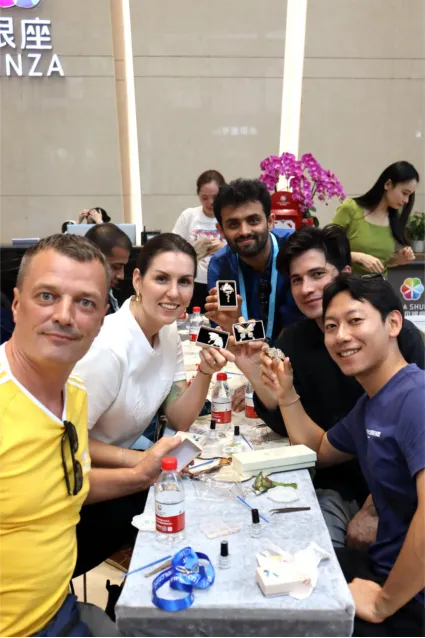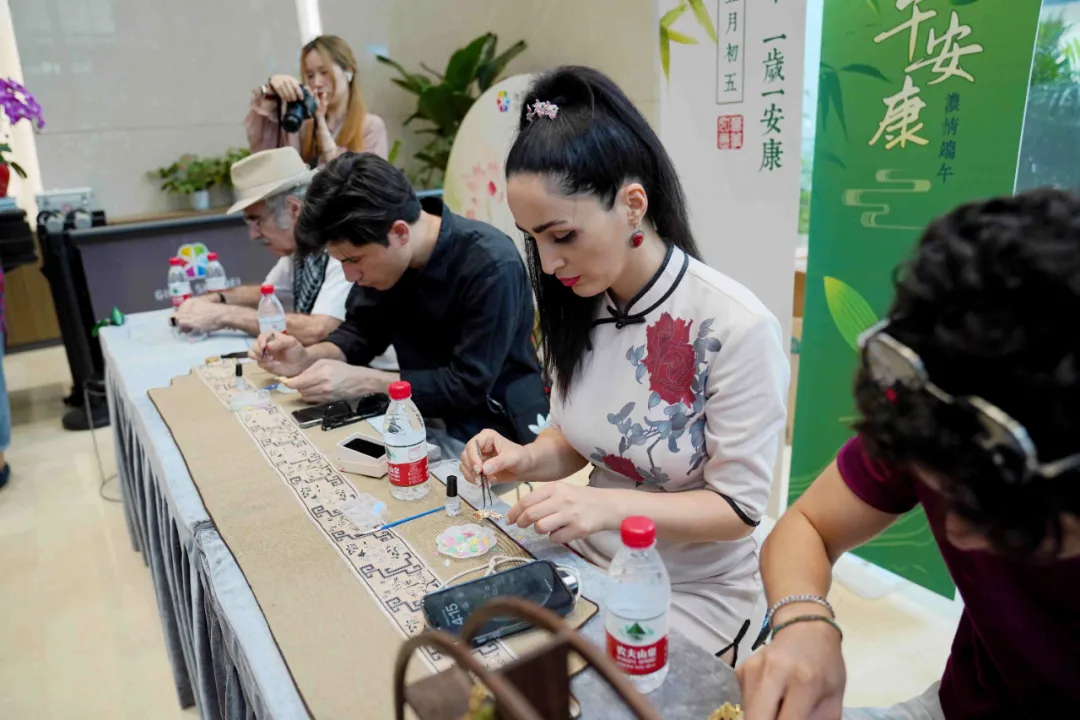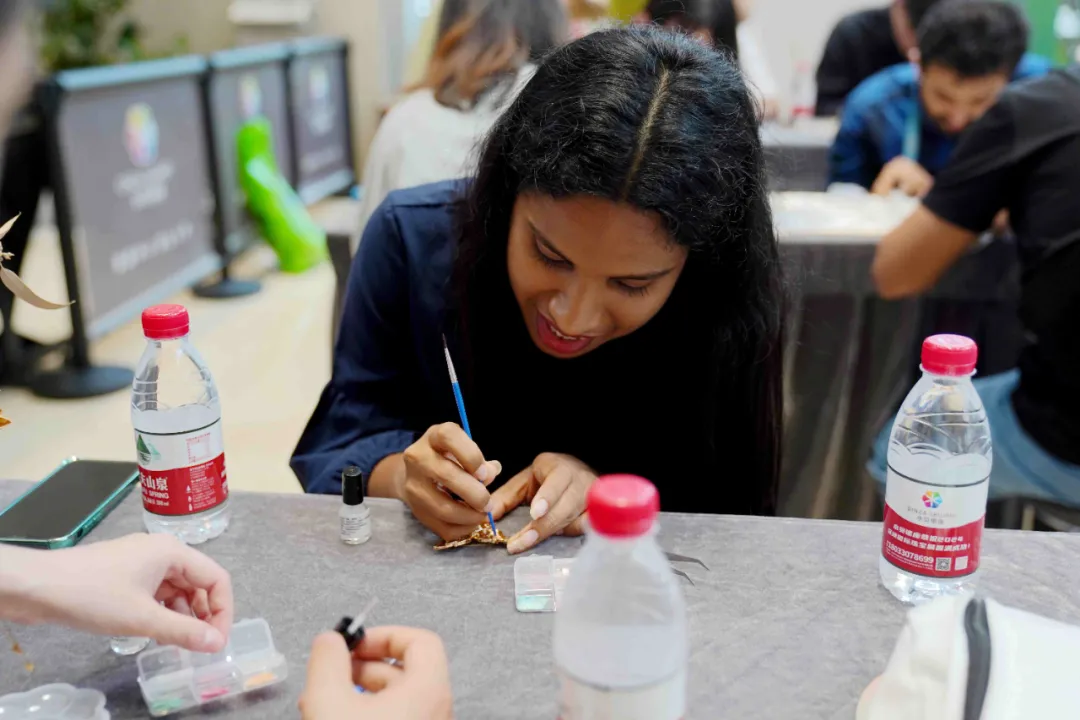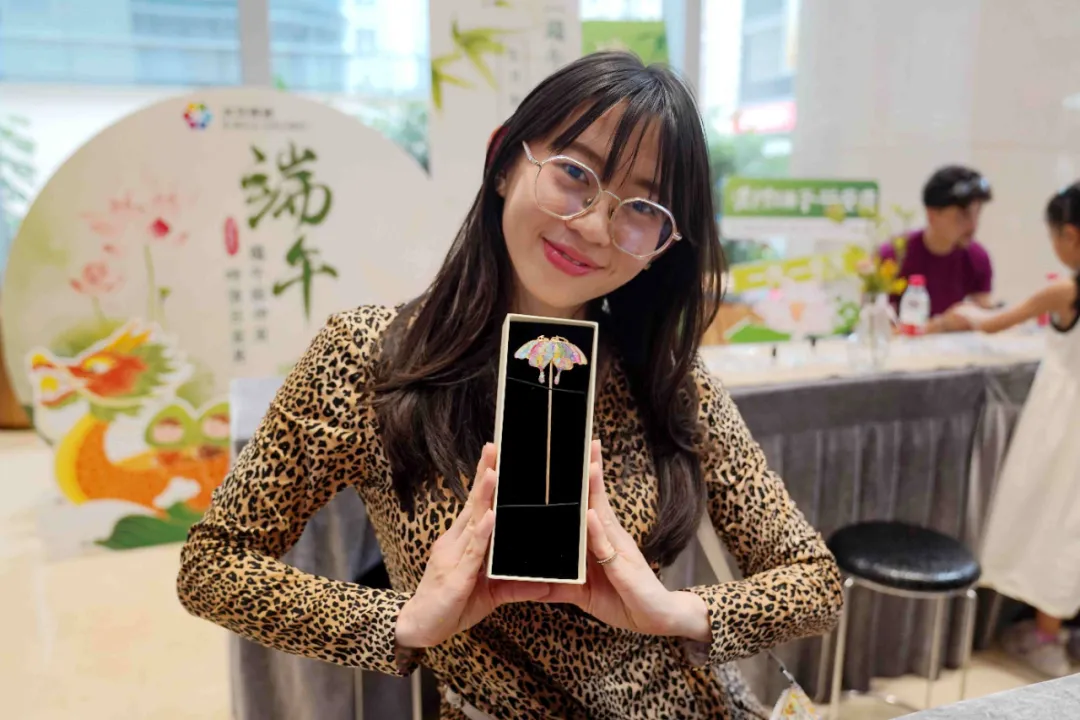Video and photos by Wang Haolan
Known as China's Jewelry Capital, Shuibei in Shenzhen's Luohu District is often described by the saying, "If you're thinking of Chinese jewelry, consider Shenzhen; and when it comes to Shenzhen's finest jewelry, Shuibei is the place to explore."
As one of the earliest hubs for the gold and jewelry industry after China's reform and opening up, Shuibei has evolved over the years into one of the largest and most advanced jewelry clusters in the country, with a fully developed industry chain.
The Shenzhen Jewelry Industrial Cluster, located in Shuibei, was a major subvenue of the 21st China (Shenzhen) International Cultural Industries Fair (ICIF).
On May 23, an international delegation of nearly 20 people from both the Z10 Club, an international communication club composed of Generation Z students from 10 universities in Shenzhen, and the Shenzhen Global Communication Ambassadors program visited Shuibei to experience the charm of this "jewel-filled" area and learn more about the booming gold and jewelry industry.

Visitors display accessories they decorated with mother-of-pearl inlay. Courtesy of Ginza Shuibei
The group toured Shuibei Ginza in the afternoon. The 38,000-square-meter Ginza complex houses jewelry trading spaces, corporate offices, exhibition halls, and dining areas. One highlight of the visit was a mother-of-pearl inlay workshop held on the first floor, which gave guests the chance to try their hand at this intricate craft.
Mother-of-pearl inlay is a traditional Chinese art that involves using seashells, particularly the luminous shell (also known as the nightlight snail), to create detailed designs — such as flowers, birds, and geometric patterns — which are then embedded into objects for decoration.
Under the guidance of a skilled artisan, the international visitors made brooches, bracelets, and hairpins using this delicate technique, immersing themselves in the beauty of traditional Chinese craftsmanship.

Iranian student Pooneh Dabiri (2nd R) decorates a hairpin.
Pooneh Dabiri, an Iranian student from Shenzhen University (SZU), was the fastest to complete her hairpin. She proudly showed her work and told Shenzhen Daily, "It's amazing to dive deep into Chinese culture like this. This traditional Chinese hairpin is beautiful, like a piece of art. For foreigners visiting China and for those of us learning Chinese, such an experience is truly meaningful."
Dabiri also mentioned that jewelry blending Chinese cultural elements would be very popular in the Middle Eastern market and has huge growth potential.

Mihindi Amarasena makes a butterfly brooch adorned with mother-of-pearl pieces.
Mihindi Amarasena, a Sri Lankan student from SZU, used luminous seashells to decorate a butterfly brooch. Carefully placing colorful shell fragments one by one, she completed her piece. She shared, "I used different colored shells to inlay the brooch, which was a wonderful experience that took a lot of patience. I've realized how much effort artisans put into creating cultural pieces and now have a deep respect for their craft."

Jeeranun Soontornpornjaroen poses for a photo with her hairpin.
Jeeranun Soontornpornjaroen, from Thailand, also made a hairpin. She said, "This is my first visit to Shuibei, and I was blown away by Shuibei Ginza. I'm very impressed by the refined Chinese jewelry with their complex designs, especially since most of them are handmade. The attention to detail is amazing."
The event provided international visitors with a unique opportunity to get a closer look at Shuibei's gold and jewelry industry and the artistry and cultural significance of traditional Chinese craftsmanship. Many left with a deeper appreciation for Chinese culture and were eager to share their experiences with others back home.
















